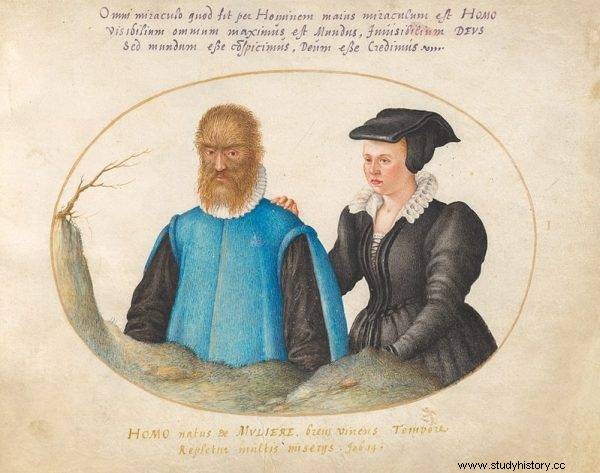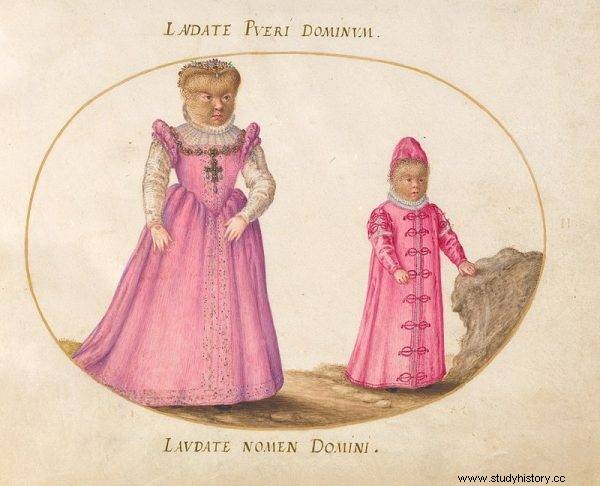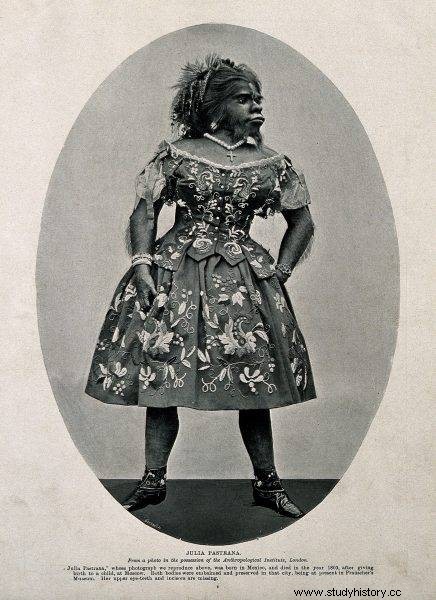The first literary version of this fairy tale is considered to be a story written by a Frenchwoman, Gabrielle-Suzanne Barbot de Villeneuve. Her work is significantly different from the currently most popular Disney fairy tale. Moreover, it could have been inspired ... by real events that took place over a century before the author of Beauty and the Beast was born.
Petrus Gonsalvus was born in 1537 in Tenerife. However, he was not an ordinary boy, since from an early age he suffered from a disease known today as hypertrichosis, or hirsutism. The condition probably contributed to the social exclusion of the child at a very early age, but his isolation did not last long. At the age of less than 10, he was captured and taken to the French court as a gift for the newly crowned King Henry II.
The gift intrigued the new ruler. Although Petrus looked like a wild creature and could hardly speak, his behavior was evidence of human origins . Hypertrichosis was an unknown disease at the time, and Gonsalvus was probably the first known case in Europe. No wonder that he was approached with a distance and caution. However, he bought Henry with something, because he ordered the boy to be dressed well, treated with respect, educated and left at the French court.
Petrus spent the next 12 years of his life as a curiosity living under the tutelage of the king. He was not a free man, as he was the property of the ruler, but he is not harmed at all. There is a high probability that kidnapping and bringing him to France gave him a more peaceful life.
Beauty marries the Beast
In 1559, Henry II died, and Gonsalvus was taken over by the king's widow, Catherine of Medici. The new caretaker of Petrus started to wonder "what if ..." and decided that her protégé could use his wife.
Of course, she didn't mean any noblewomen. No, the daughter of one of the servants, Katarzyna Raffelin, was to participate in the experiment.
It is not known to what extent the girl entered into a voluntary marriage with Gonsalvus and how much she was forced to marry. Nevertheless, many researchers hypothesize that they formed quite a harmonious couple, as evidenced by the tender gestures immortalized in the portraits of the married couple. But was it really so? We'll probably never know that.

Katharina Raffelin with her husband Petrus Gonsalvus.
It is certain, however, that Katarzyna and Petrus had seven children - four sons and three daughters. Four of them were affected by hypertrichosis and the remaining three were born healthy.
The news of this peculiar family circulated around European courts. Many rulers and noblemen wanted to have in their offices curiosities, for example, a portrait of a beast from France. Therefore, the images of both Petrus and Catherine and their children were immortalized by painters. Dressed in ornate outfits, members of the Gonsalvus family often presented themselves in caves to emphasize their wild appearance. Many of these paintings can be seen today in Innsbruck at the Ambras Castle.
And they lived long and (not so) happily
Life at the French court came to an end for Petrus and his loved ones with the death of Catherine de Medici. After losing its patronage, the Gonsalvus family were invited to Italy, and more precisely to the court of Octavius Farnese and Margaret of Parma, ruling the principality of Parma. Here, too, they were treated as strange, intriguing courtiers that no one else could boast of.

Many rulers and noblemen wanted to have in their offices curiosities, for example, a portrait of a beast from France. Therefore, the images of both Petrus and Catherine and their children were immortalized by painters.
In Italy, however, they were not only "curiosities" entertaining with their presence among the regulars of salons and "exhibits" posing for portraits for private collectors. They caught the attention of Ulysses Aldrovandi, a naturalist and physician who described their case extensively in his work "Monstrorum Historia".
Petrus and Katarzyna in Italy lived to a ripe old age, but never really experienced normality. The family was often torn apart. The Gonsalvus children were sent to various courts and displayed like exotic animals. Their images even found their way to the zoological atlas "Animalia Rationalia et Insekta" by Joris Hoefnagel, which also presented dangerous insects and exotic butterflies.
A sad fairy tale about the ape-people
"Ape-people" - such a patch followed the Gonsalvus, but not only them. Hypertrichosis is an extremely rare disease, and people affected by it have always aroused great interest, a great example of which is also the story of Julia Pastrana , 19th century Mexican.
Abandoned as a baby, she was brought up in an orphanage, from which she later found herself on the stage of an American circus. During her performances, she caught the attention of Theodor Lent. He saw the potential in the girl and bought her to become her manager, and then her husband, and to present Julia on European stages (including Warsaw).

Hypertrichosis is an extremely rare disease, and people affected by it have always aroused great interest, a great example of which is also the story of Julia Pastrana
Unfortunately, this story's finale is even sadder. During a trip around the Old Continent, the woman became pregnant and gave birth to a son, also marked by the disease. The baby died at birth and the mother followed him a few days later as a result of postpartum complications.
However, they were not allowed to find peace after death. Theodor decided to continue making money on his "monkey wife" and her child. He ordered their bodies to be stuffed and presented in showcases as exhibits that passed from hand to hand after his death. And so for the next 152 years.
Only in 2012, after an extensive international action, the bodies of the mother and child were buried in a cemetery in Mexico.
